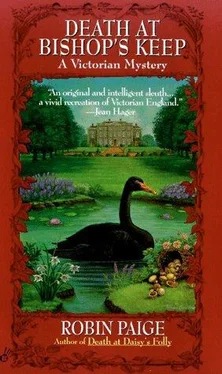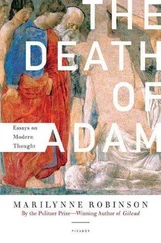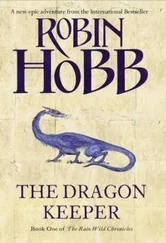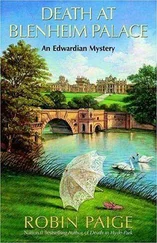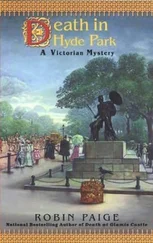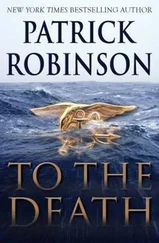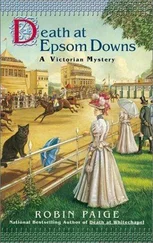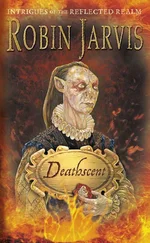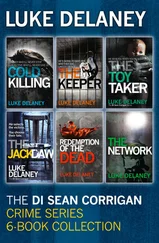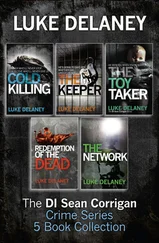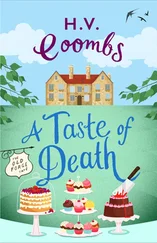Robin Paige - Death at Bishops Keep
Здесь есть возможность читать онлайн «Robin Paige - Death at Bishops Keep» весь текст электронной книги совершенно бесплатно (целиком полную версию без сокращений). В некоторых случаях можно слушать аудио, скачать через торрент в формате fb2 и присутствует краткое содержание. Жанр: Классический детектив, на английском языке. Описание произведения, (предисловие) а так же отзывы посетителей доступны на портале библиотеки ЛибКат.
- Название:Death at Bishops Keep
- Автор:
- Жанр:
- Год:неизвестен
- ISBN:нет данных
- Рейтинг книги:5 / 5. Голосов: 1
-
Избранное:Добавить в избранное
- Отзывы:
-
Ваша оценка:
- 100
- 1
- 2
- 3
- 4
- 5
Death at Bishops Keep: краткое содержание, описание и аннотация
Предлагаем к чтению аннотацию, описание, краткое содержание или предисловие (зависит от того, что написал сам автор книги «Death at Bishops Keep»). Если вы не нашли необходимую информацию о книге — напишите в комментариях, мы постараемся отыскать её.
Death at Bishops Keep — читать онлайн бесплатно полную книгу (весь текст) целиком
Ниже представлен текст книги, разбитый по страницам. Система сохранения места последней прочитанной страницы, позволяет с удобством читать онлайн бесплатно книгу «Death at Bishops Keep», без необходимости каждый раз заново искать на чём Вы остановились. Поставьте закладку, и сможете в любой момент перейти на страницу, на которой закончили чтение.
Интервал:
Закладка:
"Indeed, sir," Trabb concurred, writing industriously.
Charles spoke in a quiet voice. "Do you think, Sergeant Battle, that a thief would have overlooked the gold ring? It's worth a few guineas, at least."
The sergeant gave Charles a look in which suspicion and deference contended, then turned back to the corpse. "P'raps yer right, sir," he said with an exaggerated courtesy that seemed to suggest its opposite. "More like, th' thief were in a tearin' hurry t' be done wi' th' deed, or cudn't get the bleedin' ring off."
Charles bent over, slipped the ring off the corpse's ring finger, and handed it without a word to the sergeant.
"Right, sir," Sergeant Battle murmured. He pocketed the ring. Trabb's scribble paused momentarily, then continued.
Charles stood back and surveyed the area. He had for the past week spent the daylight hours documenting the progress of Sir Archibald's dig, so he had a good sense of the lay of the land. The northern border of the excavation was bounded by other digs, making the ground in that direction difficult to navigate, especially in the dark of a moonless night, such as the last. On the southern side of the excavation, however, six yards away, was a dirt cart track that led to the street. According to the student archaeologist, the site was unattended after dark.
Shouldering his camera, Charles slowly paced from the pit to the cart track, head down, studying the sandy surface. There had been a drizzle early in the previous evening. Footprints around the excavation-those left after the rain-had already been destroyed by the tramping to and fro of the police. But as he neared the cart track, a line of footprints emerged out of the muddle. He pulled out an ivory folding rule, laid it beside the prints, and took a photograph, then another. Then he walked a few paces to the cart track and, once again using his rule for scale, took several photographs of what seemed to be the wheelprints of a cab or carriage and the hoofprints of a single horse.
As he changed plates, he noticed on the ground a lozenge of old ivory, about the size of his thumb and curiously carved with minutely detailed leaves and flowers, pressed into the loose dirt by a careless foot. He carefully repositioned his camera and photographed the piece of ivory at the closest range the lens would allow, from three different angles. Then he signaled to the sergeant.
"I think this bit might be of interest to you, Sergeant Battle." Charles pointed at the piece of ivory. "It looks as if it were dropped here recently, does it not?"
The sergeant knelt, squinting, then picked up the ivory and slipped it into his pocket. "P'raps," he remarked carelessly. He glanced at the camera and tripod. "Quite a imposin' instrument, that, sir. I see yer've been busy wi' it."
Charles's camera had been made in Paris in 1890. It had a
mahogany front panel which folded down when the camera opened to form the baseboard that supported the square leather bellows and the Eurygraphe Extra-Rapid No. 3 lens. The camera was older and somewhat more cumbersome than others he owned, but was ideal for making detailed exposures where focus was critical and haste in composition no object. It was in his opinion a very fine camera.
"I plan to develop the plates this evening," he said. "If you would find photographic prints of this unfortunate business of use in your investigation, I should be pleased to let you have them."
Charles could see that Sergeant Battle was wary of his offer, and perhaps understandably so. It had been almost seventy years since Daguerre had created his first tantalizingly impermanent images on silver plates coated with a light-sensitive layer of silver iodide, and five years since George Eastman had wound a ribbon of cellulose nitrate on a spool inside a wooden box that he called a "Kodak." The camera was no longer an inventor's novelty used by a handful of eccentrics.
The use of photography in the solving of crime, however, was still relatively unproven in 1894. No doubt Sergeant Battle had heard that Scotland Yard routinely photographed criminals, chiefly as an aid to identification, and perhaps he had even heard a rumor that Alphonse Bertillon, in Paris, was experimenting with detailed photographic records of the crime scene. But the techniques of investigation in the borough police forces were at a decade or more behind those of the Metropolitan Police, which lagged by yet another decade those of the French Surete. Sergeant Battle might well not be able to imagine to what use the photographs of this morning's gruesome discovery could be put. After all, there was the corpse, absolutely and indisputably dead, the means of death unquestionably visible in the bloody shirt front. There was PC Trabb, earnestly and meticulously recording each minute detail of the crime scene in his notebook. And shortly, a qualified medical practitioner would examine the body to ascertain whether any instrument or agency other than a knife might have contributed to the victim's untimely demise, and in due
course would present his report to the coroner and his jury. What possible service could photographs render in this time-honored process?
But Charles observed that the sergeant was a cautious man, not prepared to reject out of hand a gentleman's offer of assistance, whatever he might do with the photographs once they were in his possession. "T be sure, sir," he said with a show of earnestness. "If you'd be so kind as t' bring th' pichures t' th' station, I'll see as they gets put t' good use."
"Then I shall," Charles agreed. He pointed at the cart tracks and footprints. ' 'Perhaps your man might want to have a go at these."
"A-corse, sir," said the sergeant, as he stepped on one of the prints.
Observing that there was nothing left to be learned from the scene and litde additional help he might offer, Charles took his camera and tripod and walked away.
6
"It is a truth universally acknowledged, tnat a single man in possession of a good fortune must be in want of a wife."
— JANE AUSTEN, Pride and PrejudiceCharles climbed into the barouche and placed his camera on the seat, his bag of exposed plates, tripod, and other gear on the floor. The man in the opposite seat lowered his newspaper.
"I must say, Sheridan," he said lazily, "I'm not altogether sure what fascinates you about those old Roman ruins. Not much of value being dug up these days, I'll wager."
Charles sat down with a slight laugh. "Perhaps not. But the remains that were dug up this morning were rather of interest. As it happens, there was a bit of foul play."
"You don't say." Bradford Marsden folded the newspaper and raised his voice slightly. "Drive on, Foster."
The coachman lifted the reins and the carriage lurched into its place in the stream of traffic on the cobbled street, behind a brewer's dilapidated dray and a farm wagon filled with baskets of fresh lettuces and cauliflowers.
"A foreign gentleman was unceremoniously dispatched and shoved into an excavation," Charles said. "The local constabulary were on the scene, going about a semblance of investigation." He leaned back in the seat, pulled down his hat brim, and began to reflect on the morning's events. To be truthful, they had stimulated him in a way that he rarely felt stimulated, except perhaps by the discovery of a new species of flora or the sight of an unnamed fossil. One of the hazards of having sufficient money to be at one's leisure was the hazard of continually finding oneself bored by the banality of one's existence and hence forced to seek new forms of intellectual stimulation. Murder was most stimulating.
To engage his mind, Charles had throughout most of his thirty-three years employed himself with various scientific studies. At nine he had accompanied his paleontologist grandfather in the pursuit of fossil shells and corals at Walton-on-the-Naze. At twelve he produced a field guide to local species of edible fungi, hand-illustrated and annotated. At fifteen, he devised a detective camera small enough to be concealed beneath the waistcoat, with the intent to take pictures on the sly. At Eton and Oxford, Charles did not exercise the discipline of narrow specialization in any science, but rather indulged himself in a broad study of all. His natural powers of observation were remarkably keen, exceeded only by his insatiable curiosity, his indefatigable memory, and his unflagging powers of inquiry. But he did require something of interest to excite those powers.
Читать дальшеИнтервал:
Закладка:
Похожие книги на «Death at Bishops Keep»
Представляем Вашему вниманию похожие книги на «Death at Bishops Keep» списком для выбора. Мы отобрали схожую по названию и смыслу литературу в надежде предоставить читателям больше вариантов отыскать новые, интересные, ещё непрочитанные произведения.
Обсуждение, отзывы о книге «Death at Bishops Keep» и просто собственные мнения читателей. Оставьте ваши комментарии, напишите, что Вы думаете о произведении, его смысле или главных героях. Укажите что конкретно понравилось, а что нет, и почему Вы так считаете.
